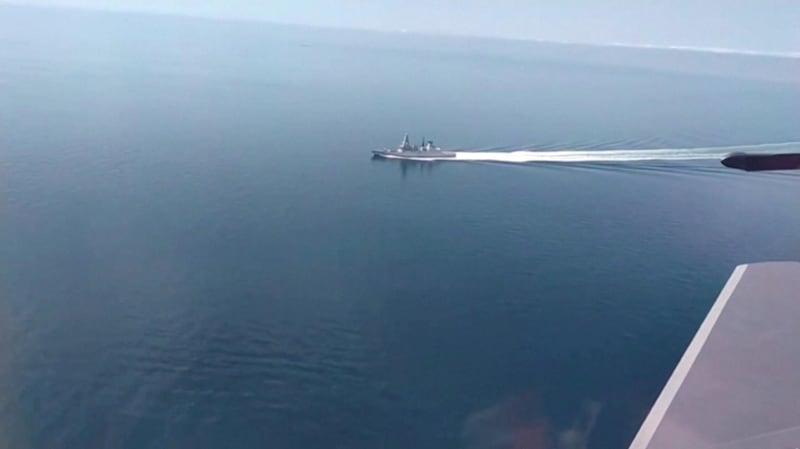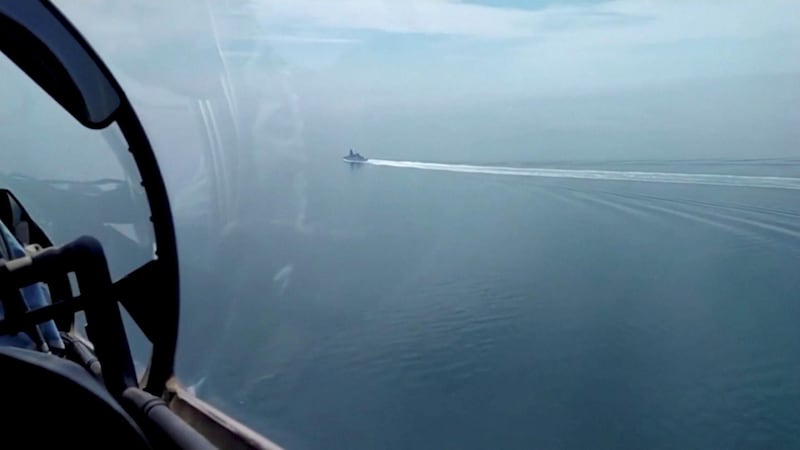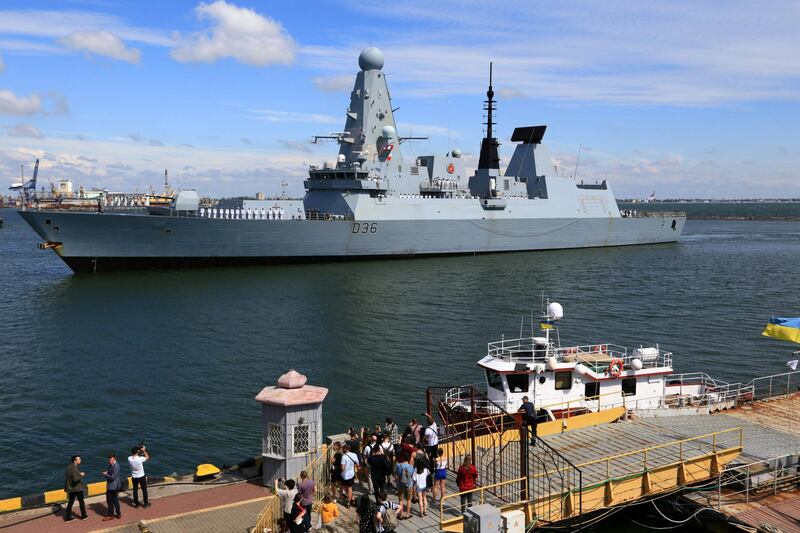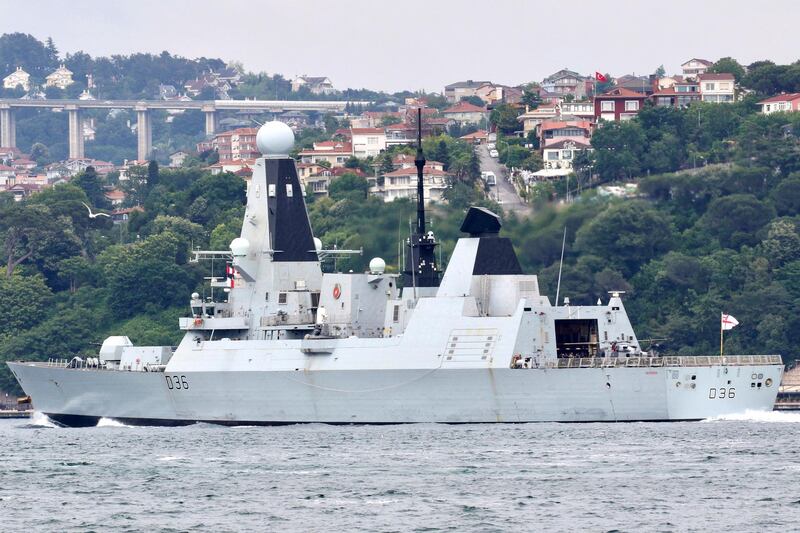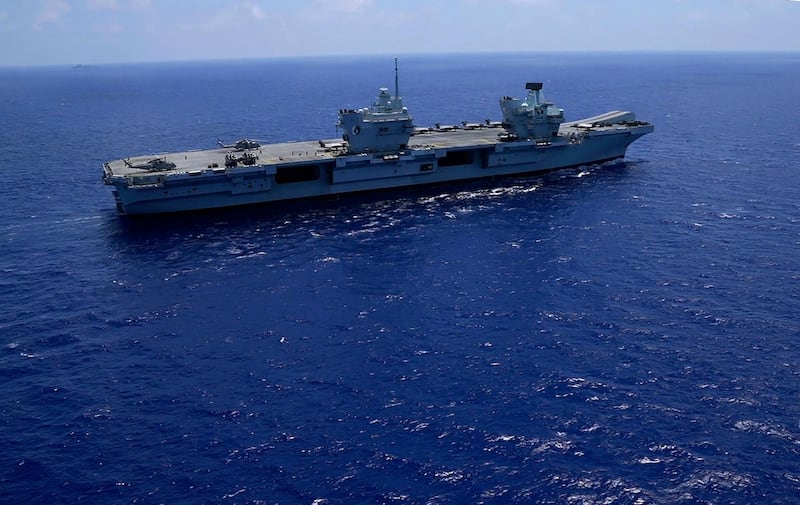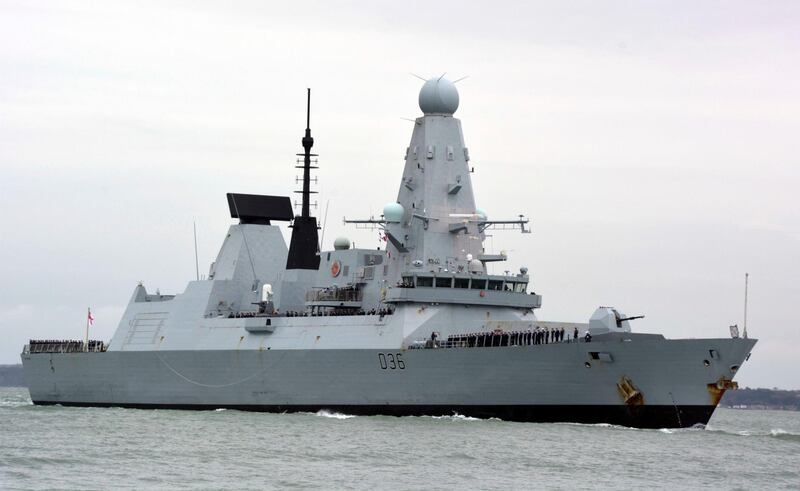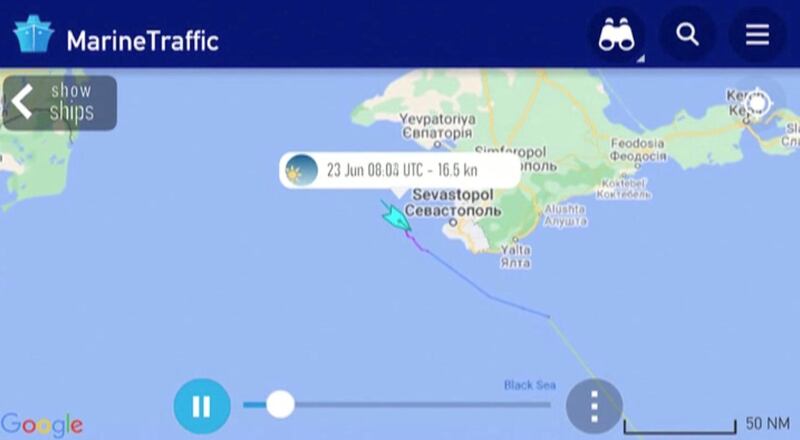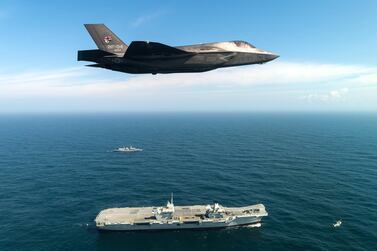The BBC news alert on Wednesday seemed to suggest that a Third World War was looming.
Russia had just dropped bombs close to a British Royal Navy warship and fired on it from a shore battery after the vessel sailed close to Crimea. A shooting war in the Black Sea was a distinct possibility.
Russia said one of its patrol vessels fired warning shots at a British destroyer, off the coast of Crimea in the Black Sea, and its jets carried out close range inspections.
Two British journalists reported “out of range” shots after the vessel.
The Royal Navy warship was passing from the Ukraine port of Odessa to Georgia on the far side of the Black Sea.
The route took it across shipping lanes that were 22 kilometres off Russian-controlled Crimea.
The British Ministry of Defence issued a rapid rebuttal, saying that HMS Defender had not been fired on and had remained in international waters.
A quick look on the reliable MarineTraffic website showed the destroyer had stayed within international waters and not sailed to within three kilometres of Crimea, as Russia claimed.
So what was Russia up to? The appearance that its armed forces had successfully driven off a foreign incursion was clearly designed for domestic and international consumption, regardless of the truth.
“It’s more about the warfare narrative of what people believe rather than what the truth is,” said Dr Sidarth Kaushal of the Rusi think tank.
“On the one hand it shows the Royal Navy as being provocative just off a major Russian naval base and then purports to demonstrate a very firm Russian response in driving them off.”
It was indeed a classical piece of “fake news” of which Moscow has become the master.
It also appears that the propaganda heist was carefully planned.
Unknown hackers, presumably Kremlin-backed, have in the past four days been “spoofing” less reputable marine tracking websites, said Keir Giles, a Russia expert at Chatham House.
Russia wants regime to be seen as tough
On June 19, they were able to manipulate the British warship’s position a few kilometres away from Sevastopol.
The reality was that the photograph proved HMS Defender was in the Ukrainian port of Odessa 300km away.
The aggressive spoofing and false story were prime examples of “domestic signalling, showing the regime is tough, that the British entered our territorial waters and we drove them off”, Dr Kaushal said.
But the credibility of the Russian claims was further undermined by the idea that its bombers could get close to the warship without being detected or engaged.
The Type-45 destroyer is arguably the most advanced in the world, armed with Sea Viper anti-aircraft missiles that can hit a small object travelling at the speed of sound.
The warship also has a powerful electronic jamming system that could inhibit a Russian Su-24 bomber significantly without firing a shot.
“It's essential to President Putin's popularity and to the war narrative within Russia itself, that the image of an external enemy is kept alive and flourishing,” Mr Giles said.
“Moscow has to appear strong enough to prevail against this imaginary threat and this feeds into the line that it is taking on a hostile West but is able to resist that incursion.”
If the attack had really happened Moscow would have released imagery showing its tough response. To date, there has been none.
“This would appear to fit in a pattern of increasing Russian military assertiveness on its flanks with Europe,” said Brig Ben Barry, of the IISS think tank.
After the recent meeting with US President Joe Biden in Geneva, Mr Barry thought Mr Putin would have “played it quiet for while”, but could still “go in the opposite direction”.
Keir Giles
Others argue that the incident was a demonstration to Nato of Russia’s own "red lines" to reinforce the belief that Crimea, which the Kremlin annexed from Ukraine in 2014, is part of Russia and will be robustly defended.
After Mr Biden laid down America’s red lines over cyber attacks on the 16 critical US infrastructure sites to Mr Putin, “if one were to read the tea leaves a bit in the wake of Geneva, this is Russia's way of trying to underscore its own red lines, that Russia is willing to very aggressively enforce its territorial claims in the Black Sea", Dr Kaushal said.
In the end, it plays into the Kremlin’s narrative that Russia’s armed forces are strong and can force Nato warships to retreat at the sight of the mighty Russian Navy and Air Force.
It also creates tricky political decisions in sending warships into the Black Sea.
On one level, Nato wants to show Ukraine, which barely has a navy since it was seized in Crimea, that it has a strong ally that will not be intimidated.
But as the incident showed, that does not come without risk.
“Whenever a warship undertakes innocent passage through waters in the Black Sea, a change of course can be presented by Russia as them retreating,” Mr Giles said.
"Defender was also sufficiently close to an area where pre-planned Russian naval exercises were taking place, allowing them to pretend they were actually shooting towards the vessel."
The incident raises the stakes for Britain’s new carrier when it heads through the South China Sea this summer.
Beijing is also a robust defender of its territory, including that which it has seized and whose waters it unfailingly defends.
